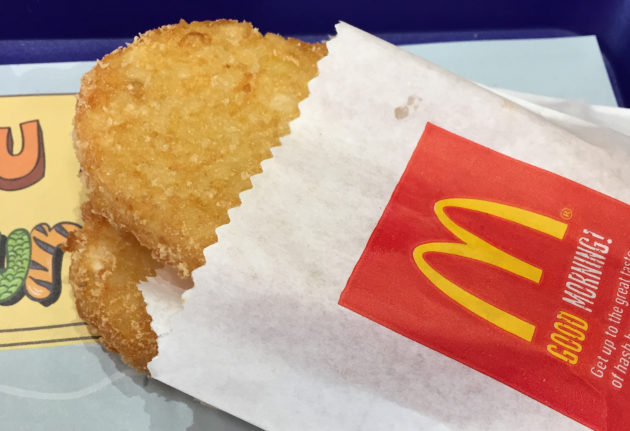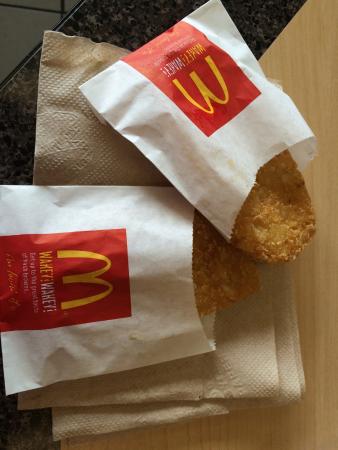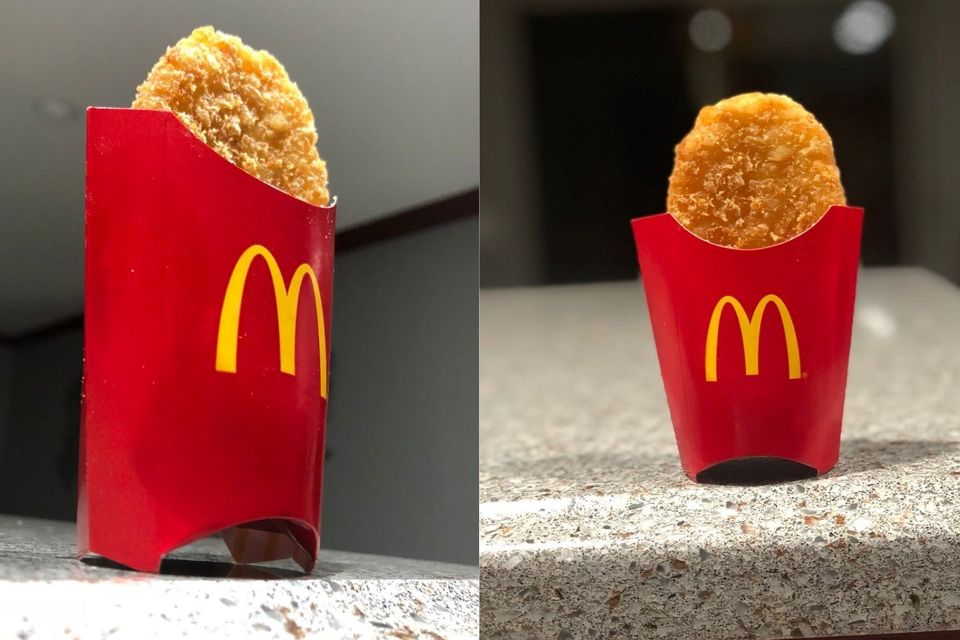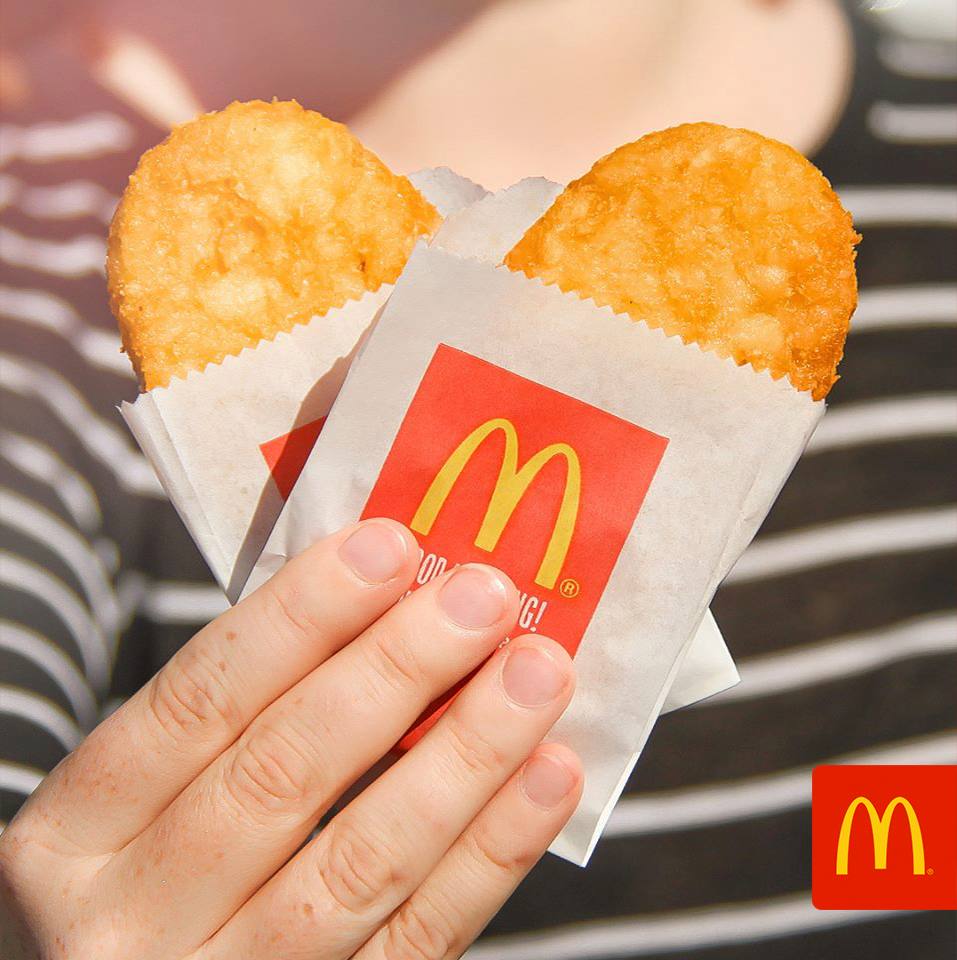Are you curious about the current price of McDonald’s hash browns? Look no further! In this blog post, we will delve into the rising cost of this beloved breakfast item. From its humble beginnings as a cheap and satisfying treat to the recent social media outcry, we will explore how the price of McDonald’s hash browns has transformed from an affordable indulgence to a potentially unaffordable luxury. Join us as we uncover the reasons behind this shift and the challenges faced by the fast-food giant. So, if you’re wondering just how much a McDonald’s hash brown will set you back now, keep reading to find out more!
Decoding the Rising Cost of McDonald’s Hash Browns

mcdonalds hash brown
In the ever-evolving landscape of the fast-food industry, one of the most beloved chains, affectionately referred to as ‘Mickey D’s’, is undergoing significant changes. These changes are not limited to menu revamps or innovative marketing strategies, but extend to the very core of the customer experience – the pricing of their favorite meals. In particular, the humble hash brown, a staple side order at McDonald’s, has seen a surprising surge in its price, causing a ripple of discontent among the fast-food giant’s loyal clientele.
It’s no longer business as usual at your local McDonald’s. The golden arches have always symbolized affordable, quick, and satisfying meals for millions worldwide. However, the recent price hike, especially on side orders such as the hash brown, has left many customers questioning the value they’re getting for their hard-earned dollars. The hash brown, once a budget-friendly addition to any meal, now costs a whopping 29 cents more than a breakfast sandwich, a revelation that has left many customers flabbergasted.
As the news of this surprising price hike spread, customers took to social media to voice their disbelief and frustration. One such customer, a TikToker known as @hugesnlfan or Stephen, encapsulated the collective sentiment in a viral video. The video, which compared the prices of a breakfast sandwich and a hash brown, quickly gained traction, sparking a broader conversation about the pricing strategies of popular fast-food chains.
This unexpected price jump is not only causing a stir among customers but also provoking deeper inquiries into the cost-setting processes behind the scenes. Are these price hikes a result of rising operational costs or a strategic move to increase profit margins? As the debate rages on, one thing is clear – McDonald’s has just become a little more McExpensive.
As we delve deeper into this issue in the following sections, we’ll explore how this price surge is impacting McDonald’s image as an affordable fast-food haven and what this could mean for the future of the fast-food industry.
From Pocket-Friendly Fast Food to Premium Priced Delights

mcdonalds hash brown
Looking back at the golden era of McDonald’s, one can’t help but reminisce about the brand’s commitment to providing value for money. In the not-so-distant past of 2009, a promotional campaign allowed customers to relish the taste of two crispy hash browns for just a dollar, a deal that was almost too good to be true. Fast forward to today, and you’ll be taken aback by the stark contrast in the pricing structure. A single hash brown now comes with a hefty price tag of $3.19, a price surge that has left customers questioning the brand’s affordability factor.
But it’s not just the hash browns that have seen a drastic price hike. Stephen, a vigilant customer turned social media activist, shed light on the issue by pointing out that even the medium fries, once a staple in McDonald’s meals, are now priced at an exorbitant $4.59. His revelations, shared via a viral TikTok video, have sparked a wave of discontent among the fast-food giant’s customer base, many of whom find these prices unjustifiable.
This sudden and significant increase in prices has had a palpable impact on McDonald’s transactions per unit, a key indicator of customer behavior. The financial strain of these increased costs is forcing customers to rethink their orders, often choosing to forgo side orders altogether. The result is a substantial decline in the popularity of the restaurant’s side dishes, a trend that could have long-lasting effects on the brand’s overall sales and reputation.
The ripple effects of this pricing strategy are not just limited to the company’s bottom line. They’re also being felt by the customers, many of whom, once loyal to the brand, are now reconsidering their dining options. The question on everyone’s mind is whether this is a temporary shift or a permanent change in the fast-food landscape. Only time will tell if McDonald’s can weather this storm and regain the trust of its customers.
While the company’s management remains tight-lipped about the reasons behind the price surge, speculation is rife. Some attribute it to rising operational costs, while others see it as a strategic move to increase profits. Regardless of the reasons, one thing is clear: the once affordable fast-food haven is slowly transforming into a premium-priced indulgence, leaving customers to wonder, “How much is too much for a McDonald’s hash brown?”
The Social Media Outcry: A Deeper Look
Stephen’s candid revelation on TikTok struck a chord with the digital community, resulting in a wave of responses that spread like wildfire. His video, which detailed the startling price hike of McDonald’s hash browns, quickly went viral, amassing over a million views and sparking a flood of comments. It was evident that Stephen’s experience was not an isolated incident, as numerous users echoed his sentiments, citing similar pricing inconsistencies at other fast-food outlets such as Five Guys. This shared frustration illustrated a collective sense of betrayal felt by loyal fast-food patrons who felt that their go-to eateries were no longer providing the value they once did.
The ripple effect of these price hikes was profound. Commenters, once regular patrons of McDonald’s, began to voice their decision to reconsider their dining choices due to the steep pricing. This marked a significant shift in consumer behavior, potentially signaling a broader change in the fast-food landscape. Furthermore, the conversation evolved beyond the realm of pricing and ventured into the territory of worker compensation and benefits.
Many users argued that if businesses like McDonald’s were increasing their prices, the additional revenue should be reflected in better wage structures and improved employee benefits. This sentiment highlighted a growing public demand for corporate responsibility and fair treatment of workers. As such, what began as an outcry over the price of a hash brown morphed into a larger dialogue about the morality and fairness of these newfound prices within the fast-food industry.
Interestingly, the social media uproar has also led to a broader examination of the fast-food industry’s pricing strategies. It has triggered questions about whether these price hikes are a result of rising operational costs or a strategic move to boost profit margins. The conversation continues to evolve, shedding light on the intricacies of the fast-food industry and the impact of its pricing decisions on consumers and employees alike.
A Commercial Challenge

mcdonalds hash brown
McDonald’s CEO, Chris Kempczinski, recently addressed the growing concerns regarding the company’s pricing strategy. He acknowledged a notable decrease in units per transaction, confirming the pushback from customers against the sudden price hikes. Despite the mounting pressure, the company stands firm, justifying their actions as a response to the financial and operational realities they are currently facing. Factors such as inflation, increased costs of ingredients, and labor have all reportedly played a role in this decision. Learn when does McDonalds serve lunch and enjoy your favorite McDonalds Hash Brown!
In an era where every dollar counts, the price of a simple hash brown has become a symbol of the struggle between corporate profitability and consumer affordability. The fast-food giant, known for its budget-friendly meals, is now facing criticism for transforming an affordable breakfast staple into a luxury item. This transformation has not only affected customers’ wallets but also their ordering habits. The company has noticed a significant decrease in orders that include sides like hash browns, indicating that people are consciously omitting these items due to their inflated prices.
However, the question remains whether this pricing strategy is a short-term reaction to the current economic climate or a long-term shift in the company’s business model. Could this be a strategic move to reposition McDonald’s in the market, or is it merely a survival tactic in the face of rising operational costs?
While it’s still unclear how this commercial challenge will unfold for McDonald’s, it certainly signals a shifting landscape for the fast-food industry. The price surge has sparked a broader conversation about the balance between profitability and affordability, not only for McDonald’s but for all players in the fast-food market. As consumers become more price-conscious and demand better value for their money, fast-food chains will need to reassess their pricing strategies to remain competitive.
As the controversy continues to brew, one thing is clear: the price of a McDonald’s hash brown has become more than just a breakfast item. It’s now a symbol of the commercial challenges facing the fast-food industry in the 21st century.
McDonald’s: A Paradigm Shift from Pocket-Friendly to Premium?
As we delve deeper into the ongoing debate surrounding McDonald’s pricing strategy, it is crucial to understand that the implications stretch beyond the shock factor of paying a hefty sum for a hash brown. The scenario is a stark reflection of an evolving fast-food landscape, where affordability might be losing its grip to premium pricing. The shift is not just a monetary transition but a cultural one, stirring up emotions and memories of a time when McDonald’s was synonymous with pocket-friendly, gratifying meals.
Stephen’s viral TikTok video has not only highlighted the peculiarity of the pricing structure but also ignited a poignant conversation on the changing perception of McDonald’s. Once a go-to spot for quick, inexpensive eats, the fast-food giant now seems to be inching towards a space that was previously occupied by more upscale eateries. The question here is not just about the escalating prices but also about the potential shift in the brand’s positioning and identity. If you like this post check out how many carbs do chicken mcnuggets contain and unveil the mystery are chicken nuggets dairy free?
As the price tag on McDonald’s menu items continues to soar, it’s not just the customers who are feeling the pinch. The change is also impacting the ordering patterns, with a noticeable dip in orders that include sides like hash browns. This shift in consumer behavior could potentially affect the overall sales and profitability of the company, leading to a reevaluation of its pricing strategy.
With affordability and customer satisfaction deeply ingrained in its business DNA, McDonald’s finds itself at a crossroad. Will it continue down the path of premium pricing, potentially alienating a segment of its customer base? Or will it revert to its roots of being an affordable fast-food haven? The decisions made in the boardrooms of McDonald’s in the coming months will not only shape the future of the company but also potentially redefine the fast-food industry’s pricing strategies.
As we eagerly await the next chapter in this unfolding saga, one thing is certain – the humble hash brown has become an unlikely symbol of the commercial challenges and dilemmas facing the fast-food industry.
FAQ & Users Questions
1. Why are McDonald’s customers upset about the prices?
Customers are upset about the increase in prices, specifically for sides like hash browns. They find the pricing to be unreasonable and have taken to social media to express their shock.
2. How much does a McDonald’s hash brown cost?
As mentioned in the article, a TikToker shared a screenshot showing a hash brown priced at $3.19. However, please note that prices may vary depending on the location.
3. Are other menu items also becoming more expensive at McDonald’s?
While the article primarily focuses on the price increase for sides like hash browns, some TikTokers have also compared the prices of other menu items, noting that they are becoming more expensive as well.
4. Has McDonald’s acknowledged the decrease in orders for hash browns?
Yes, the CEO of McDonald’s has acknowledged the decrease in units per transaction, indicating that customers are omitting side orders when ordering.
5. Are customers boycotting McDonald’s due to the increased prices?
Some commenters on the TikTok video mentioned that they have stopped eating at McDonald’s due to the increased prices. However, it is not clear if this represents a widespread boycott.
